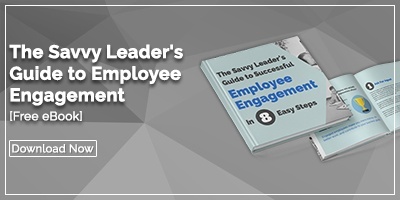 When we sit down with a prospective client, we find it is very important to understand the challenges the organization is facing and their long-term goals before we start talking about our solution. One of the themes that come up, again and again, is employee engagement, or lack thereof. What we often find is that leaders and managers implement all sorts of employee engagement activities, but they rarely have a well-crafted, cohesive plan for maximizing the human potential of their workforce. Our clients who have done it successfully have found five key elements that are essential to an effective approach.
When we sit down with a prospective client, we find it is very important to understand the challenges the organization is facing and their long-term goals before we start talking about our solution. One of the themes that come up, again and again, is employee engagement, or lack thereof. What we often find is that leaders and managers implement all sorts of employee engagement activities, but they rarely have a well-crafted, cohesive plan for maximizing the human potential of their workforce. Our clients who have done it successfully have found five key elements that are essential to an effective approach.
Before we cover them, let’s take a minute to talk about what an employee engagement strategy isn’t. It isn’t Hawaiian shirt Friday. It isn’t an Employee of the Month program. It isn’t even unlimited vacation days. Do those things if you want, but they won’t move the needle on employee engagement. That’s because employee engagement is the emotional connection that an employee has to the organization that causes the employee to want to put forth the additional effort to ensure the organization succeeds. You can’t buy it, you can’t compel it, and it’s not going to happen because of the holiday party.
What you can do is create the conditions that make authentic engagement more likely. The elements to consider are:
Purpose
People need to believe that what they are working for has meaning. Most organizations have mission statements, but few have managed to make the mission anything more than an artifact. Employees become emotionally committed to the mission when they understand what problems the organization solves, for whom, and how that impact creates net good. Too often, the subject of purpose only comes up at the annual meeting. The “why” of the organization should be more than a soundbite or a poster in the break room.
Fit
Further, engagement requires that each person has a clear picture of how the particular work they do contributes to the mission. This means that leaders must define and communicate clear objectives for the organization and cascade them down to the individual level. It’s important to consider whether employees feel like they belong. Are values aligned and lived every day? Do people see that action is taken when the values are neglected?
Enablement
Most people want to do a great job and are willing to go the extra mile under the right circumstances. Disengagement is often due to frustration that results from not being given the opportunity to achieve excellent results. This can happen when layers of management and red tape prevent people from solving problems or improving processes. It can also occur when people don’t have the tools to get the job done.
Recognition
If extra effort goes unnoticed, why bother? If you want people to extend themselves and offer discretionary effort, it pays to let them know that it is appreciated and acknowledged. The great thing about recognizing an employee for their contributions is that others notice and you begin the snowball effect that happens when people become engaged.
Respect
Readers of this blog know that one of our central tenants is that the people who do the work are the ones who are in the best position to recognize problems and suggest solutions. Acknowledging this and listening to employee ideas for improvement is one of the most powerful ways leaders can show respect. When management is always top-down, employees begin to believe that their insights and experiences are unimportant. On the other hand, involving everyone in decision making about the processes they operate, sends the signal that their ideas have value.
When you take all of these things together, what you find is that organizations with highly engaged employees have a culture that supports the individual as they support the organization. You see people who feel free to speak up when they have an idea because they know that their voice will be heard and appreciated. Increasing engagement isn’t simple, but doing so is the only way to get the most out of your organization’s most valuable asset.




Add a Comment